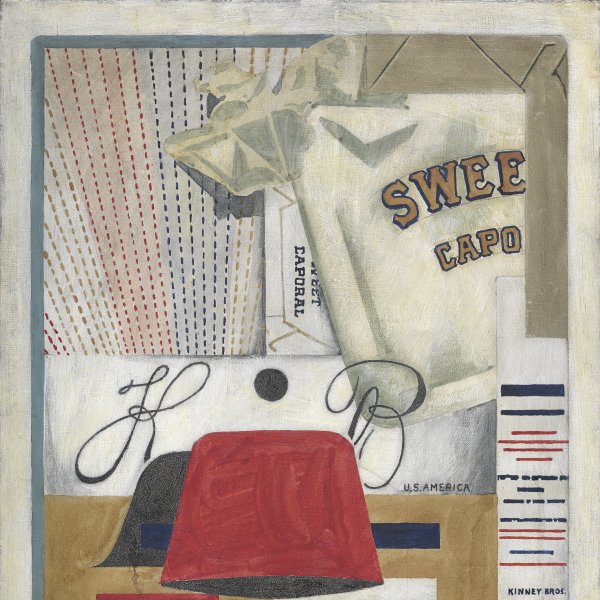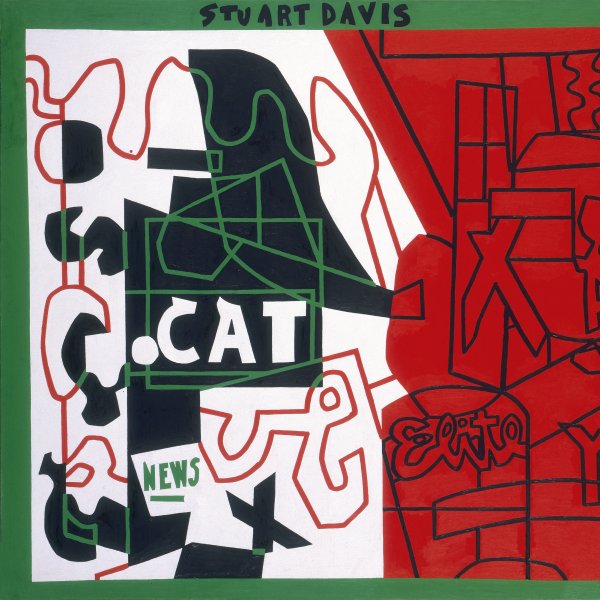Stuart Davis
Philadelphia, 1894-New York, 1964
Stuart Davis perfectly combined the new artistic ideas from Europe with the spirit of American society. He borrowed elements of the Cubist language to create works inspired by city life, which shaped a new type of American art and were to painting what jazz had been to music.
Davis’s father was the art editor of The Philadelphia Press. This brought him into contact with other artists working in the city, such as Robert Henri and John Sloan. He studied with Henri in New York from 1909 to 1912 and a year later was one of the youngest artists to exhibit at the Armory Show. Up until then his works displayed the same dark palette and thick brushwork as his master and the rest of the Ashcan School, but the impact of the works shown at the legendary exhibition caused his interest to shift towards experimentation with the new trends in art. His initial interest in Post-Impressionism gave way in the 1920s to the vocabulary of synthetic Cubism, which he employed in his depictions of American consumer products such as the series on cigarette packs. In these works with vivid colours, the picture planes overlap, imitating the effect of collage to an extent. Around 1927 his compositions tended towards greater abstraction and he produced a series of still lifes of superimposed geometric planes that had in common an egg beater.
After a spell in Paris in 1928, Davis collaborated with numerous organizations that defended artists’ interests during the economic crisis that ravaged the United States. In 1931 he began to teach at the Art Students League and from 1934 onwards played an important role in the Artists Union, of which he was president and editor of its publication Art Front. His compositions from this period, in which the influence of jazz became increasingly evident, grew larger and more complex. Indeed, around this time Davis received numerous commissions for mural paintings, such as from the WNYC Municipal Broadcasting Company of New York in 1939. The modern city continued to be the main subject of his works, except during the Second World War, when he became attracted to nature themes.
Davis’s father was the art editor of The Philadelphia Press. This brought him into contact with other artists working in the city, such as Robert Henri and John Sloan. He studied with Henri in New York from 1909 to 1912 and a year later was one of the youngest artists to exhibit at the Armory Show. Up until then his works displayed the same dark palette and thick brushwork as his master and the rest of the Ashcan School, but the impact of the works shown at the legendary exhibition caused his interest to shift towards experimentation with the new trends in art. His initial interest in Post-Impressionism gave way in the 1920s to the vocabulary of synthetic Cubism, which he employed in his depictions of American consumer products such as the series on cigarette packs. In these works with vivid colours, the picture planes overlap, imitating the effect of collage to an extent. Around 1927 his compositions tended towards greater abstraction and he produced a series of still lifes of superimposed geometric planes that had in common an egg beater.
After a spell in Paris in 1928, Davis collaborated with numerous organizations that defended artists’ interests during the economic crisis that ravaged the United States. In 1931 he began to teach at the Art Students League and from 1934 onwards played an important role in the Artists Union, of which he was president and editor of its publication Art Front. His compositions from this period, in which the influence of jazz became increasingly evident, grew larger and more complex. Indeed, around this time Davis received numerous commissions for mural paintings, such as from the WNYC Municipal Broadcasting Company of New York in 1939. The modern city continued to be the main subject of his works, except during the Second World War, when he became attracted to nature themes.






